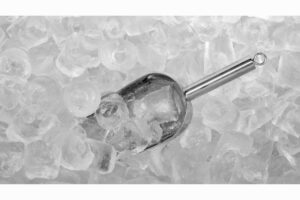If you’re a woodworking enthusiast or simply someone who wants to give a fresh look to wooden furniture, you’ve probably heard about two popular wood finishes: Polyshades and Gel Stain. Both of these products offer a way to enhance the appearance of wood while providing protection. However, they have distinct differences that can significantly affect the final result of your project. In this article, we’ll dive into the world of wood finishes and explore the differences between Polyshades and Gel Stain, helping you make an informed decision for your next project.
Introduction
Wood finishing plays a crucial role in woodworking projects, as it not only protects the wood but also enhances its beauty. Polyshades and Gel Stain are two popular options that offer different approaches to achieving this goal. In this article, we will compare these two wood finishes, highlighting their advantages, disadvantages, and ideal use cases.
Understanding Wood Finishes
Before we delve into the specifics of Polyshades and Gel Stain, let’s take a moment to understand the importance of choosing the right wood finish. The finish not only adds aesthetic appeal but also acts as a protective layer, safeguarding the wood from moisture, sunlight, and daily wear and tear.
Different Types of Wood Finishes
Wood finishes come in various types, including varnish, lacquer, shellac, and oil-based finishes. Each type offers distinct characteristics in terms of appearance, durability, and application method.
Importance of Choosing the Right Finish
Selecting the appropriate wood finish is crucial to achieving the desired results. The wrong finish can negatively impact the appearance and longevity of your project. This is where the choice between Polyshades and Gel Stain becomes significant.

Exploring Polyshades
What is Polyshades?
Polyshades is a combination of both stain and polyurethane, designed to provide both color and protection in a single step. It aims to simplify the wood finishing process by eliminating the need for separate staining and finishing steps.
Pros and Cons of Polyshades
Polyshades offer the advantage of convenience, as it combines two essential steps into one. This can be a time-saver, especially for those new to woodworking. However, the all-in-one nature of Polyshades can sometimes result in a slightly less natural appearance compared to traditional methods.
Best Uses for Polyshades
Polyshades are well-suited for projects where efficiency is a priority. It’s great for beginners and for pieces that don’t require an ultra-customized finish.
Unveiling Gel Stain
What is Gel Stain?
Gel Stain is a thick, pigmented stain that provides a unique way of coloring wood. It doesn’t penetrate the wood’s pores like traditional stains; instead, it sits on the surface, creating a more even color.
Pros and Cons of Gel Stain
Gel Stain offers excellent color control and a more consistent finish compared to traditional stains. Its thickness allows for fewer streaks and blotches, making it a favorite among woodworkers. However, it might require additional coats to achieve the desired color intensity.
Best Uses for Gel Stain
Gel Stain is perfect for projects where you want a consistent, opaque color that highlights the wood’s natural grain. It’s particularly effective on porous woods that tend to absorb traditional stains unevenly.
Key Differences Between Polyshades and Gel Stain
Application Process
Polyshades: One-step application with combined staining and finishing.
Gel Stain: Requires separate staining and finishing steps.
Appearance and Finish
Polyshades: Provides a convenient finish but may look slightly less natural.
Gel Stain: Offers a unique, consistent finish that highlights wood grain.
Versatility and Compatibility
Polyshades: Suited for less complex projects and beginners.
Gel Stain: Ideal for achieving a specific, consistent color on porous woods.
Durability and Maintenance
Polyshades: Offers reasonable durability and ease of maintenance.
Gel Stain: Provides good durability and is relatively easy to maintain.
Factors to Consider When Choosing
Type of Wood
Consider the type of wood you’re using and how it interacts with the finish. Some woods absorb stains differently than others.
Desired Finish
Decide whether you want a more natural look (Gel Stain) or a convenient, all-in-one finish (Polyshades).
Project Complexity
For intricate projects, Gel Stain might offer better control over the color and finish.
Making the Right Choice
When choosing between Polyshades and Gel Stain, weigh the pros and cons based on your project’s requirements. Consider the wood type, desired finish, and your level of experience.
Conclusion
In the world of wood finishes, Polyshades and Gel Stain offer distinct advantages. Polyshades simplify the process with an all-in-one solution, while Gel Stain provides unique color control and consistency. By understanding your project’s needs and the characteristics of each finish, you can confidently choose between these two options to achieve the perfect result.
FAQs
Can I use Polyshades on outdoor furniture?
While Polyshades can be used outdoors, it may not provide the same level of durability as other outdoor-specific finishes.
Does Gel Stain work on all types of wood?
Gel Stain can be used on a variety of wood types, but its effectiveness may vary. It’s essential to test on a small area first.
Is Gel Stain more challenging to apply than traditional stain?
Gel Stain can be easier to apply since it doesn’t penetrate deeply, but it may require additional coats for desired color intensity.
Can I apply Gel Stain over an existing finish?
Gel Stain can be applied over some existing finishes, but proper surface preparation is crucial for a successful outcome.
Which finish is more suitable for a vintage, aged look?
Gel Stain’s unique consistency and control make it an excellent choice for achieving vintage, aged appearances on wood projects.



